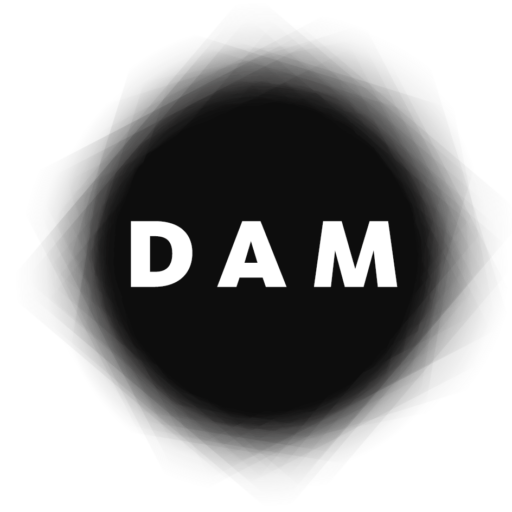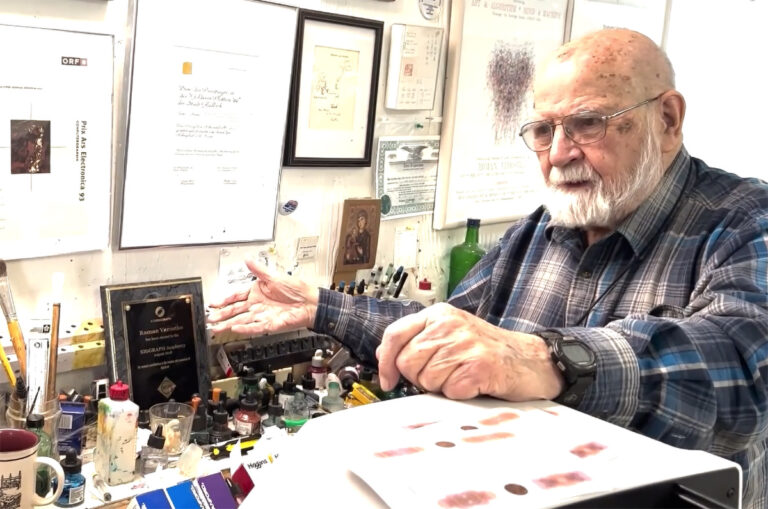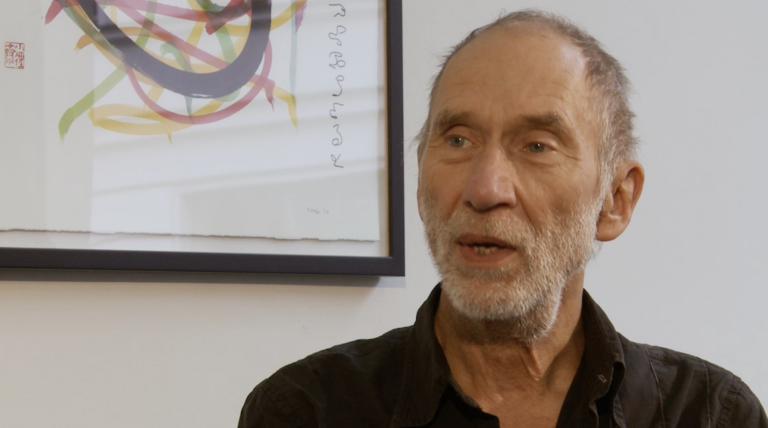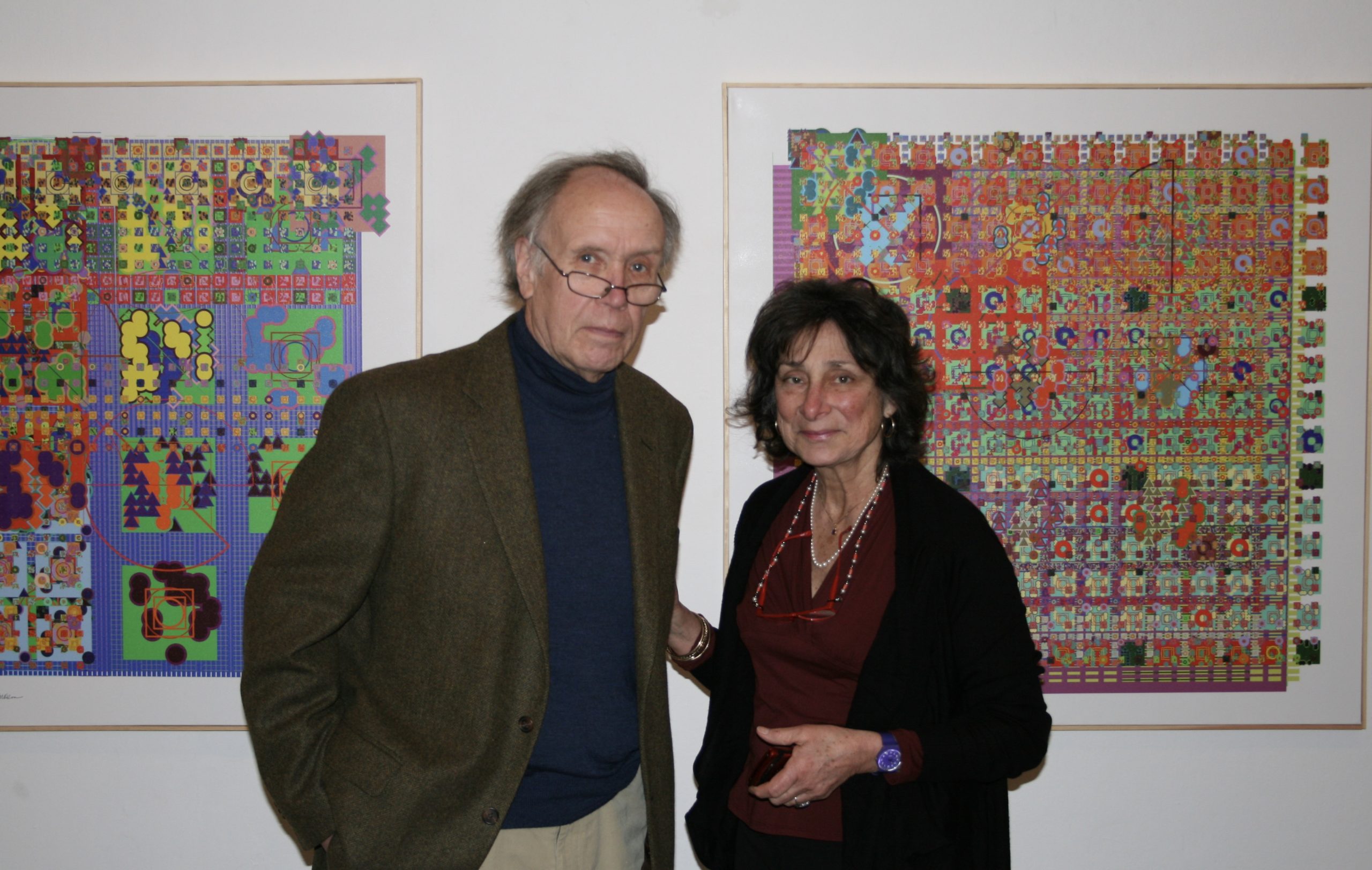
About Mark Wilson
Mark Wilson is an artist, author and programmer who created his first computer-generated artworks in the early 1980s and has been part of a group of artists who started using computer software to create art in the early stages of personal computing.
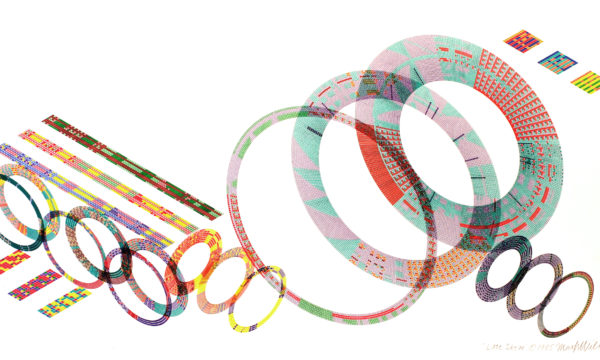
Six questions to a computer graphics pioneer
On the occasion of the solo exhibition MOVETO LINETO, presenting a selection of artworks by digital art pioneer Mark Wilson at DAM Projects in Berlin, Wolf Lieser, director of DAM, sat down with the artist and asked him six straight questions about his career and the development of digital art.
Mark Wilson (* 1943) originally began his career as a painter before discovering the possibilities of generative software in the early 1980s. In doing so, he developed a clearly recognisable style from the outset, creating a coherent body of work that is not interested in quick effect, but reveals itself to be multi-layered upon close inspection.
Why did you change from being a painter to work with a computer, when it was such a challenge to learn programming at the time?
I started at about half my career as a painter. I made pictures that were very complicated, geometric, and had technological themes to them. So I was naturally disposed to having an interest in computers. In 1980, I bought a small personal computer. And when I got it, I realized that I didn’t have the slightest idea of how to make it do anything. Then I played with it, and I realized that programming was very much like some art making, in that it was procedural. A lot of the abstract art that I grew up with used algorithmic techniques. I use the example of Jackson Pollock, which is kind of a strange example. But Jackson Pollock was basically using algorithms to make his drip paintings: he dip a stick in a paint can, and let paint dribble, doing it over and over again. My emphasis is, this is an algorithmic procedure. It’s very similar to what Sol Lewitt did, and I realized that I had a natural affinity for making art in this way. So I started out learning programming and at first I wrote very simple programs. But then programs became more complex, and I realized that there were more and more visual possibilities through programming.
Did you ever feel like going back to painting and giving up programming?
The short answer is no. I’ve always had an affinity for painting and using my hands to make things and I do miss it in some ways, but the thing that happened was once I got involved with computers, there were so many possibilities and so many things that you could do with a computer that I never really felt like going back. So I’ve just continued to explore the possibilities and kept on programming.
How was the response of the art world towards this kind of art?
I would say initially, the art world was very dismissive of this kind of art. The art world went through a period in maybe the early 60s where it had some interest in computer generated art, but it soon lost interest. And most of the conventional art world, galleries, dealers, critics, were very dismissive of computer art and tended to not take it very seriously. There are some basis for this, because I think some of the early work was done by people who did not come from a context of Fine Arts. They were more based on science and computer programming. And they did not have a background in fine arts. So their work was not very sophisticated in terms of, of art making.
But it was a struggle. I know, for myself, and for a lot of the other people that were working like I did. It was very frustrating because the art world simply ignored us and didn’t take us seriously. I applied for grants as a painter, because that’s ultimately what my work is. It’s about painting and drawing. And this foundation, which I won’t mention, sent me back a letter saying no, we do not fund computer art, we do not want to have anything to do with computer art. So the art world despite the fact that we think it’s very progressive and very advanced in its thinking, it is in some ways very conventional. And initially, the art world just did not have a good attitude about art made with a computer.
You wrote a book, already in 1984, about programming and creating art with computers. What tempted you to write a book?
Around 1983 or 1984, a computer magazine called PC Magazine published a story about my art making with a computer. And this in turn generated interest from a publisher, who contacted me and asked me if I would like to write a book about this. So I said: “Sure, great idea!” I thought about it for a while, because I wasn’t sure exactly what I would put in the book. But the more I thought about it, the more it seemed what I should write about are the simple ways in which I use programming to make my pictures and then how you could build on the simple ideas and develop more complex ideas. So I explained a bit about programming, and then about the various means artists had to make pictures with a computer, which has always been our problem.
It was a problem, from the very beginning, to figure out how to actually get a computer to make something, to make an image. That is still a problem. In the book there was also a brief survey where I included work from various people who were working like I was at the time, such as Manfred Mohr, Harold Cohen and a bunch of other people. I saw it as a “catch-all” that had a little bit of everything in it. But anyway, I’m pleased with it. And I think it is sort of an interesting artifact from the mid 1980s, about how one would use a computer to make pictures.
Can you elaborate a little bit about what your art is about. Your painting already looked similar, to some degree, to what you did later on with the computer. How did that develop over time and how was it to work with programming?
When I first started with a computer, I really didn’t have a concrete idea of what the work was going to develop. And initially, my programming skills were rather limited. The images were quite simple, but they were produced on a pen plotter, so they were drawings, linear drawings on paper. And they were somewhat reminiscent of my earlier work. But I became fascinated with the idea of developing more complex images with a computer.
So I hit upon this technique, which I call pixel mapping, which is where I take an image on the screen, a very simple low resolution image, and then I plot pixel by pixel onto the paper or the canvas. And this allows me to develop a more complex image, a somewhat more painterly image. I also realized that the computer and computer graphics made it possible to plot these pixels on different kinds of surfaces, so I began plotting things using polar coordinates where I would take the rectilinear coordinates and plot them in a circle. This in turn led to other techniques of plotting them on conic surfaces. And then I would add sine waves onto these surfaces. So the pictures became increasingly more complex, and they became more painterly.
And in about 1985, inkjet printers, which had had problems over the years that the inks were not very light fast, they’re not really very archival, but the manufacturers developed very good, large format inkjet printers. One of the first companies was Iris printers, which are very difficult and expensive to use, but soon Epson, Hewlett Packard, and Canon all brought out relatively affordable inkjet printers that could print large pictures on canvas or paper up to like 4044 inches wide, and the inks were very permanent. So I began using these kinds of printers, and they all of a sudden opened a new era for me in the terms of that it was not just limited to lines, but you could fill whole areas. And the language I use to make these image postscript makes when you draw one postscript line over another, the line underneath or the filled pattern is gets obliterated by whatever goes on top. So the pictures became more complex with a layer of process where I would layer maybe two or three layers or maybe I would make 20 or 30 layers. So the imagery became very complex, very detailed, and quite kind of rich in terms of the visual qualities
Later on there were some artists who were working with the computer generatively as well. And they formed the group the Algorists. Your were part of them as well. How did that happen?
Well, the Algorists were not really from a group. I mean, we didn’t have membership cards and we didn’t pay dues back in the 80s. I got to know Manfred Mohr slightly when I wrote my book, and then a lot of us contributed work to an organization called SIGGRAPH, which is a computer users organization. And each year, they would have a convention and an art show. And I submitted my work to a number of these shows and I would go to these shows. And at that time, I think I met Jean Pierre [Hébert], Roman Verostko and Manfred. And as I say, there was never any formal association with us, but we are all very sympathetic to each other’s work. And we were all working in a very similar way, using coding and writing programs. And the artwork was was all generated through code. So we developed a natural sympathy for each other’s work.
